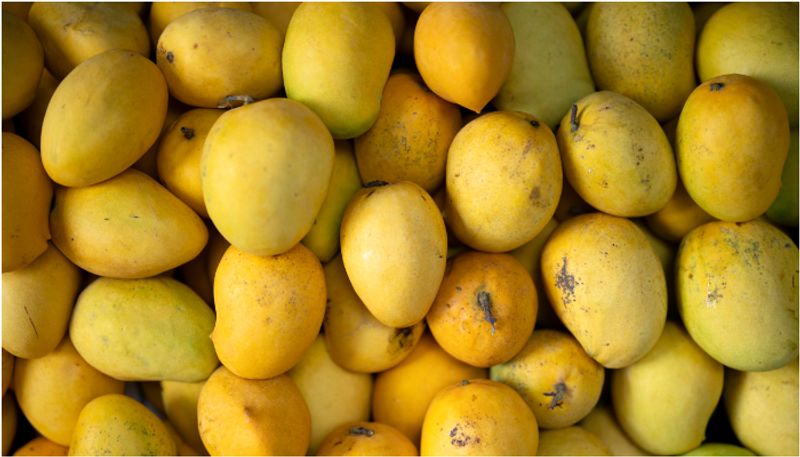Mango season alert! Learn to spot real mangoes and avoid harmful chemicals
Food Desk: It's mango season! But the market's flooded with fake ones alongside the real deal. Don't ruin your health by eating chemically treated fruits. Use these tricks to spot the real and fake mangoes...
- FB
- TW
- Linkdin
)
What are fake mangoes?
Mangoes are grown using poisonous chemicals to ripen them quickly. This makes them ripen in 1-2 days. These fruits look attractive and mouth-watering, but eating them after bringing them home ruins your health and wastes your money.
How to check for real mangoes?
To check for real mangoes, look at their size. They shouldn't be too big or too small. Naturally available fruits have a different smell, color, and size.
What do fake mangoes look like?
Fake mangoes are smaller than real ones. Sap leaks from them. Be careful when buying such fruits.
How to test it?
To test for real mangoes, fill a large container with water and then put the mangoes in the water. The other way is if no juice comes out after cutting a mango, it means it has been ripened with chemicals.
Identify mangoes by color
To identify real mangoes, pay attention to their color. If they are ripened with chemicals, they will have green spots.
Detect from the mango raw
Pure raw mangoes are green. Fake raw mangoes are dry and brown. Note this, if you are a fruit grower, if you have consumed more fruit, you can identify it as fake or real by looking at it.
Detect by smelling
Real mangoes have a sweet and fruity smell. Fake fruits have no smell. You should know about this before going to the market. Don't buy fake fruits because they are cheap.
